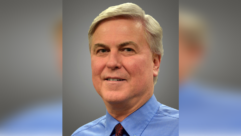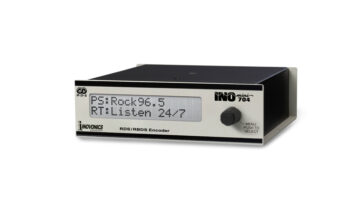
Consumer audio habits are changing, and radio companies are transitioning into multi-platform media providers.
I wondered what my recent consumption habits would look like, so I cobbled together the images on this page to represent a typical “day in Paul’s radio/audio life.” (I’d call this my personal sound cloud, but the term is taken.)
Hey, there’s “Mike & Mike” of ESPN, whom I enjoy when driving into work, listening to their nationally syndicated banter via Red Zebra Broadcasting station WTEM(AM), “ESPN 980,” on my car stereo. I love “the boys” as well as ESPN 980’s fine local hosts in the afternoons.
There’s also good ol’ WTOP(FM), the news monster here in D.C., owned now by Hubbard Radio. Anyone who doubts the potential power of local radio need only listen for a day. I usually tune to its 103.5 MHz signal in my car, though anytime something is going (threatening weather, traffic jams, warnings about terrorism), ‘TOP is the first place I tune, the first website I check.
Not depicted here is a CBC interview and bluegrass music, both of which I listened to in the car thanks to the fabulous noncommercial WAMU(FM), which extends its brand locally by using a translator to rebroadcast content from one of its HD Radio multicasts.
Once in the office, I want music without words (it’s difficult to edit otherwise), so I listen to instrumental classical, fed to my desktop via Sky.FM. That service, launched 10 years ago, offers 60 channels of curated music; its marketing states, “Unlike other Internet radio companies, we actually have Channel Directors — real people who know good music — for each of our stations.” Imagine that!
I currently use the freebie version of Sky.FM, so I accept its commercials. If I need a change at my desk, I’ll pop a CD into my computer. Remember CDs? Or I pause to enjoy some classic country music like The Amazing Rhythm Aces via YouTube.
Still, most of my radio/audio listening is after hours.
There’s WETA(FM), our outstanding local public outlet for classical music, including frequent local concerts. I like to crank Mozart in my apartment; I might listen using my smartphone, getting WETA’s stream online over WiFi and accessed by my TuneIn app; I then dock the phone into a Coby home radio so I can turn ‘er up. Usually it’s WETA that wakes me in the morning. (I like to imagine my neighbors complaining to the complex manager about hearing too much Academy of St. Martin in the Fields.)
Speaking of TuneIn, that’s one of my portals to online audio; it was founded in 2002 and backers include names like Sequoia Capital and Google Ventures. I find it easy to use to access Jazz24, produced by Pacific Public Media, the parent of KPLU(FM), and coming to me from the Great Northwest. TuneIn also lets me listen (I confess) to the occasional new age channel from, say, Belgium; I’d listen even more if they didn’t interrupt my Zen vibe with what seem to be particularly jarring audio spots. (I keep forgetting to sign up for the paid version.)
I’ve listened to maybe four of TuneIn’s 70,000 stations and 2 million on-demand programs.
Also at home, if hungry for familiar melodies, I toggle my docked phone over to iTunes; then Coby starts playing from my selections of Johnny Cash, Lady Gaga, Mark Knopfler, ZZ Top, Tony Bennett and Alison Krauss (sigh).
But my favorite content — especially when I want my cranium stimulated by ideas — is “In Our Time,” hosted by the remarkable Melvyn Bragg. I’m an unabashed, hyperventilating fan, as I noted recently on the Radio World blog.
“In Our Time” comes from BBC Radio 4, and I listen via iTunes podcast, downloaded via my home PC and played back mostly at the gym on my smartphone strapped to my arm. I am working my way up in time through its more than 500 episodes. I hope Baron Bragg, 74, keeps cranking out new ones for a long time.
So, on a given day, I listened to AM, FM and streaming, as well as songs and words I’d downloaded. I listened to content nationally syndicated, or fed from abroad, or produced up the street. I heard locally produced music hosted by savvy announcers; smart-ass chat by local sports talkers; and somewhat automated, if curated, streamed music with little personality injected. I heard radio via broadcast into my car, as well as time-shifted “radio” and other downloaded content via smartphone plugged into that car. I heard audio via streams into my bedroom, coming from traditional and “new” radio entities. While I didn’t use a Bluetooth device, satellite, Spotify or Pandora, I’ve consumed or played with them, too.
To paraphrase Gilbert and Sullivan, it turns out that — in terms of consuming radio and audio — I am the very model of a modern multimedia maven.
This is the experience of one 53-year-old American male. Your results may differ. How has your personal consumption changed, and what does that tell you about the radio biz? Write me at [email protected].
The very definition of the word “radio” is under debate, as we’ve noted. But for me, the lesson of this experience is not that radio is doomed; far from it. Rather, radio is vibrant and proliferating, but also evolving. Radio companies — “multiplatform audio content providers” — must plan accordingly.












